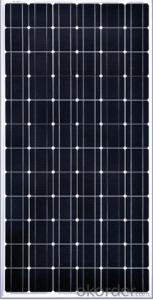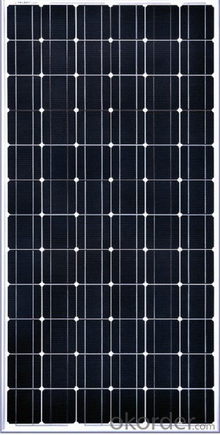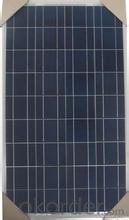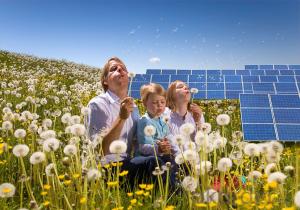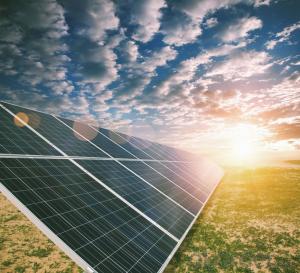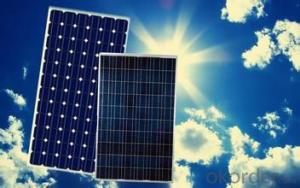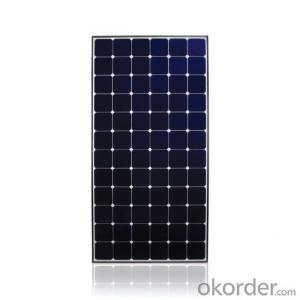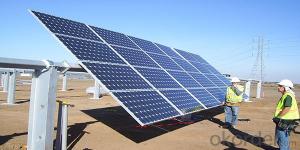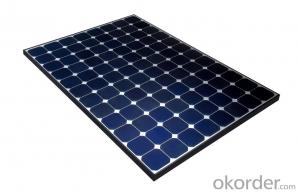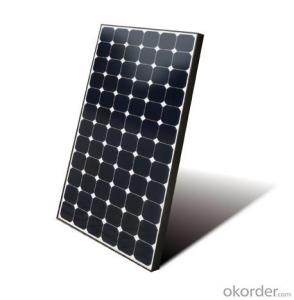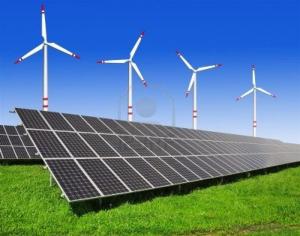Lift Solar Panels 5w CNBM Polycrystalline Silicon Panel for Home Use
- Loading Port:
- Shanghai
- Payment Terms:
- TT OR LC
- Min Order Qty:
- 100 watt
- Supply Capability:
- 1000 watt/month
OKorder Service Pledge
OKorder Financial Service
You Might Also Like
Specification
5W CNBM Polycrystalline Silicon Panel for Home Using
Production description
Most solar modules are currently produced from crystalline silicon (c-Si) solar cells made of multicrystalline andmonocrystalline silicon. In 2013, crystalline silicon accounted for more than 90 percent of worldwide PV production, while the rest of the overall market is made up of thin-film technologies using cadmium telluride, CIGS and amorphous silicon[7]Emerging, third generation solar technologies use advanced thin-film cells. They produce a relatively high-efficiency conversion for the low cost compared to other solar technologies. Also, high-cost, high-efficiency, and close-packed rectangular multi-junction (MJ) cells are preferably used in solar panels on spacecraft, as they offer the highest ratio of generated power per kilogram lifted into space. MJ-cells are compound semiconductors and made of gallium arsenide (GaAs) and other semiconductor materials. Another emerging PV technology using MJ-cells is concentrator photovoltaics (CPV).
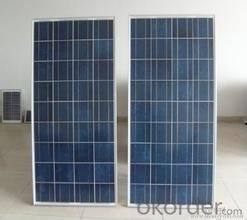
Feature
1.High conversion efficiencies resulting in superior power output performance.
2.Outstanding power output even in low light or high temperature conditions
3.Optimized design for ease of soldering and lamination
4.Long-term stability,reliability and performance
5.Low breakage rate
6.Color uniformaity
Physical characteristic
1. Rigorous quality control meets the highest international standards.
2. High-transmissivity low-iron tempered glass, strong aluminium frame.
3. Using UV-resistant silicon.
4. IS09001/14001/CE/TUV/UL
- Q: Can solar panels be installed on sloped roofs?
- Yes, solar panels can be installed on sloped roofs. In fact, sloped roofs are quite common for solar panel installations as they offer optimal sunlight exposure. However, the angle and direction of the roof slope might affect the efficiency of the panels, so proper planning and positioning are necessary for maximum energy production.
- Q: Is there a cheaper way on how to make your own solar panels ? Can someone share their real life experience ? Thank you.
- There are several things you’re going to need when making a homemade solar panel, some of the main components include: Solar Cells Wood Plate Soldering Iron Solder Tabbing Don’t worry; special tools are not required for this DIY ‘solar panel’ project, and you will probably have everything you need laying around the garage. and just bind them together.
- Q: How many kilowatts? Would it be enough to power my electric heat?Does one panel cost about $2000.?
- I doubt it'd supply your heat. Anything involving electric heating uses tons of energy. Also, keep in mind that you don't just need a panel but also a DC to AC converter.
- Q: Can solar panels be installed on ski resorts?
- Yes, solar panels can be installed on ski resorts. In fact, many ski resorts around the world have started incorporating solar panels as a sustainable energy solution. These panels can be installed on rooftops, parking lots, or even on open fields to generate clean and renewable electricity. Ski resorts can benefit from solar energy by reducing their carbon footprint, lowering energy costs, and promoting eco-consciousness in their operations.
- Q: How much electricity does a solar panel produce?
- The amount of electricity a solar panel produces depends on various factors such as its size, efficiency, location, and weather conditions. On average, a standard-sized solar panel can generate around 250 to 400 watts of electricity per hour under optimal conditions. However, this output can vary significantly throughout the day and across different seasons.
- Q: If a solar panel has a power rate of 80 Watts and efficiency of lets say 30%. Does that mean the maximum power this solar panel can generate is (30/00)*80=54 Watts or its just 80 Watts?
- If it says STC or Standard Test Conditions on the nameplate or documentation, then that means 80 watts under bright sun at an unrealistically cool temperature. It is rare to see that power in real life, except when the perfect storm of conditions come together. There is also a PTC rating for some panels, which is more realistic. If the panel does not say STC or PTC, the manufacturer is free to make up whatever test they feel like, which generally leads to ridiculously overstated power. As for efficiency, for residential panels, that's generally only of academic interest. A 80-watt panel is 80 watts, regardless of the efficiency. A more efficient panel will take up slightly less space, but most people are more interested in the total price, since roof space is generally not an issue.
- Q: Do solar panels produce noise?
- No, solar panels do not produce noise as they generate electricity from sunlight without any moving parts.
- Q: What are the benefits of solar panel heating?What does it cost for solar panels?any other important facts about it?
- Firstly,it is environment friendly,solar energy can replace electricity,so it reduce the carbon emission.Secondly,solar energy is cost effective,you will not pay any bill for electricity any more.
- Q: Is it as simple as buying the panels, an inverter and plugging it into a wall-socket, assuming it would just send power back into the outlet and supplement my house's electrical usage, or... Is it not that simple?Remember, I'm talking about a SMALL system, and I don't care how little power it'd make, or how uneconomical it would be.
- Not that simple. The N E C covers electrical systems and your state utility regulators cover what and how you can do it. As a practical consideration the inverter produces power and would have an outlet to tap it. Possibly a standard convenience outlet that is the same as your house devices. The problem is to provide a cord that does NOT have exposed hot conductors when it is plugged in and how do you isolate the system from the power grid. To do this you need both a reverse service device and transfer switch that will isolate the house from the grid while the inverter is operating.
- Q: I have a solar panel that puts out 00v, .5 amps in full sun. Before I thought it would charge a 2v battery without a solar charger but then I talked to someone and they said that it was wasting a lot of power and could potentially hurt the battery. A second part to this question is what happens if I put it on a 72v battery without a controller. Thanks!
- The solar panel is capable of /2 Amp output. If you hook it to a 2V battery directly and the battery is discharged it will want more than /2 Amp and pull the voltage down until the battery is charged to a certain level. Eventually the battery will try to charge up to 00V which will definitely damage the battery. If you use a regulator circuit running off the solar panel that outputs 2V then you will have a constant voltage circuit which will still be limited to /2A or whatever the regulator is capable of outputting. Of course you can't just go out and connect 00V to any voltage regulator it has to be capable of running from 00V and dropping the voltage to 2V like the original charger that comes with the battery. The same explanation applies to a 72V battery. You have to limit the output voltage to 72V or risk overcharging the battery.
Send your message to us
Lift Solar Panels 5w CNBM Polycrystalline Silicon Panel for Home Use
- Loading Port:
- Shanghai
- Payment Terms:
- TT OR LC
- Min Order Qty:
- 100 watt
- Supply Capability:
- 1000 watt/month
OKorder Service Pledge
OKorder Financial Service
Similar products
Hot products
Hot Searches
Related keywords
